Originally published in The Indian Journal of Applied Homoeopathy (IJAH) – July 2022. Reprinted courtesy Dr. Navin Pawaskar
Acknowledgements:
Board of Directors
Ariv Integrative Healthcare Private Limited
Dr Vishal Deshpande,
Professor Department of Repertory
JIMS Homoeopathic Medical College & Hospital
Correspondence:
[email protected]
Introduction:
COVID 19 posed varying challenges to the medical fraternity in general and to the homoeopathic community in specific. Homoeopathic fraternity responded to the waves of COVID with earnestness and enthusiasm. The fraternity witnessed seas of suggestions, recommendations, and directives from all across the globe.
The enthusiasm was so frantic at the peak of the epidemic that, at one stage suggestions outnumbered the genomic variants of the virus itself. The good got buried with the not so good in the mound of suggestions. For many of us the outcome was like a pandemonium. Somewhere deep down, the student of homeopathy was left bewildered.
In general, the medical fraternity faced many challenges. One such challenge for the clinicians was how they interact with the patient while, protecting themselves. It was important that they remain active and functional as long as possible to serve their respective patients. A physician down with COVID 19 was a huge loss to society as his/her services were withdrawn at crucial times when, society needed it the most (1).
The second important challenge was formulating and standardizing a definitive protocol that will assure all stake holders and patients. The publication of research in general media, arguments and counter arguments for or against any treatment line proved to be counterproductive as it only increased the apprehensions amongst the lay man (2).
As there was no definitive rescue remedy in allopathic system or in any other alternative systems of medicine the patients decided to explore every possible avenue to protect themselves and their families (3) (4). This lead to a surge in the demand for homoeopathy as well. Those who had never experienced homoeopathy were willing to give it a try (5).
We at Ariv, did a brief survey to access the change in demand. The surge accounted for well over 24%. People who never heard of homoeopathy wanted to give it a try as a preventive or as a therapeutic intervention. So, on one hand there was an opportunity and on the other hand there were serious challenges (6).
As a genuine seeker of new knowledge we decided to follow the principles of the Action Research. In an action research the researcher works closely with the practitioner and aims to improve the practice standards of provisions by closely monitoring the issues and problems of changing practice (7).
It is seen as an extremely useful approach to research in healthcare and social care settings. The approach also provides practitioner to account for how they act as researcher in to their daily practice thus, strengthen the practitioner researcher movement and utilization of research as underpin for the practice (8). Data drives the decision making in practice and not the individual biases, idiosyncrasies of the clinician, thus improving the outcomes (9).
The objective of this exercise was to create a COVID 19 model for clinical practice without comprising the principles of homeopathic science while, addressing the current challenges. The homoeopathic prescriptions had to be evidence based and rooted in principles of individualisation (10).
The decisions of future prescriptions were to be based on observational data of cured cases. The time required for case taking and assessment has to reduce by at least 70%. The physician exposure to the infected individual had to be minimum.
The prescriber should be trained to easily observe the individualising patterns, thus reducing the need for a highly skilled prescribers. The method should be replicable and scalable.
Methods:
An observations of 400 plus cases of diagnosed cases of COVID 19 were compiled together. Three stages of COVID 19 were observed in clinical practice. For each stage and clinical pattern observed first and second line of action was planned, the data for the same was recorded and reported real-time.
| Sr No | Clinical Stage | First Line of Action | Second Line of Action |
| 1 | Asymptomatic | ü | ü |
| 2 | Mild Symptomatic | ü | ü |
| Moderate Symptomatic | ü | ü | |
| Severe Symptomatic & Critical cases | ü | ü | |
| 3 | Convalescence | ü | ü |
Homoeopathic treatment for all the stages of COVID 19 illness was based on peculiar sign & symptoms exhibited by an individual suffering from illness. Typical diagnostic symptoms of COVID 19 were important to identify the stage of illness.
Individuals suffering from COVID 19 illness exhibited clinical patterns based on the stage of disease and peculiar symptoms of individuals (10). These clinical patterns when observed helped to select indicated homoeopathic medicines.
Clinicians encountered: Asymptomatic, Mild, Moderate and Severe cases of COVID 19. A certain proportion of the cases in these clinical stages had COVID pneumonias and comorbidities which were flagged as risk factors influencing the outcomes (11). All these cases were treated homoeopathically based on principles of Individualization with single indicated remedy.
Each patient was monitored and observed for clinical progress under supervision of a qualified doctor. In all cases an informed consent of the patient was obtained to use homoeopathy as adjuvant therapy to modern medicine as per ICMR protocol if, patient wished to use both the treatments.
All the treatment guidelines mentioned were suggested to be adopted & administered by qualified homoeopathic doctors only. The final selection of the remedy was left to the judgement of the clinician.
This report comprises of analysis of 453 cases reported to Ariv Integrative Healthcare Private Limited (Ariv), in Yashoda Hospital, Hyderabad, India. All the cases were recorded in predefined format and digitalised. Ariv collaborated with the American Institute of Homoeopathy (AIH) by providing clinical data of COVID 19.
Besides this, Ariv Integrative Healthcare was involved in distribution of Arsenic Album 30 to vulnerable populations as preventive immune booster against COVID 19 as advised by Central Council for Research in Homoeopathy (CCRH), New Delhi India.
54,935 families each consisting of 3 to 4 members received Arsenic Album 30 (12). The analysis of data of preventive services is beyond the scope of this reporting. Ariv Integrative Healthcare collaborated with CCRH by sharing the relevant data for research from time to time.
Dr Dilip Dixit from Mumbai created a formulation of (Calc Phos 6X+China Ars 6c+Zinc Met 6c) which was prescribed only to small portion of healthy primary contacts of Covid 19 patients (13) (14) (15). The objective was of preventing them from turning COVID 19 positive [ (16) (17)].
Ariv Integrated Healthcare was involved in a clinical trial conducted by Father Muller’s Homoeopathic Medical College & Hospital testing efficacy of the formulation. The clinical trial report at this point is under publication.
Thus, at Ariv we managed full clinical spectrum of COVID 19 from a vulnerable population, Primary Contacts, Asymptomatic Positive COVID 19, Mild, Moderate & Severe COVID 19 including pneumonias. The entire service was provided free of cost irrespective of the ability of the patient to pay for the service.
Observational Data 1
Table 1: Cases treated and break up of each category.
| Clinical Classification | Count | Percentage |
| Mild | 231 | 51% |
| Moderate | 57 | 13% |
| Severe | 5 | 1% |
| Asymptomatic positive | 108 | 24% |
| Primary contacts- negative, asymptomatic | 52 | 11% |
Table 1
A total of 453 patients were treated by the method of pattern recognition. The clinical classification of the patients and their distribution is depicted in table 1 & Graph 1. The distribution is similar to that found in the community. Mild cases and asymptomatic cases accounting for almost 2/3rd of the cases. Moderate to severe cases including pneumonias (18) and multi systemic involvement accounted for 14%.
Graph1
The table 2 & 3 depicts quantum of associated risk factors due to comorbidities in the patients. 30% of patients in this study had associated chronic clinical conditions out of which, 21% were designated risk factors associated with COVID 19. The top 5 risk factors were Hypertension, Diabetes, Coronary Artery Disease, Chronic Renal Failure, Asthma and Bronchitis. Refer graph 2 & 3.
Table2: Quantum of risk factors & associated clinical conditions
| Description | % | |
| 1 | Designated Risk Factors | 21% |
| 2 | Associated Clinical Conditions | 9% |
| 3 | No Comorbidity | 70% |
Table 2
Table 3: Cases with COVID 19 risk factors
| Risk Factors | # |
| Cancer | 3.00 |
| CRF | 4.00 |
| CAD | 8.00 |
| Hypertension | 29.00 |
| Diabetes | 21.00 |
| Asthma | 8.00 |
| Bronchitis | 4.00 |
| Pregnancy | 1.00 |
| Total | 78.00 |
Table 3
Graph2
Graph 3
We discuss in the following section how the pattern recognition concept was used in various clinical scenarios of COVID 19.
COVID 19 Clinical Configuration 1- The Asymptomatic Confirmed COVID 19 Cases.
Individuals develop no symptoms in spite of being RTPCR COVID 19 positive. Objective of management in such patients is to arrest clinical progress and reduce infectivity so as to reduce the risk of transmission during active virus shedding period.
First line of action: A case study of outbreak in a cluster. There was an outbreak of COVID 19 in a workplace. 92 out of 123 workers were tested positive between 4th October 2020 & 8th October 2020. Of the 92 patients, 8 patients were symptomatic.
On brief enquiry of the 8 patients a peculiar pattern of characteristic homoeopathic symptoms was noted. All 8 patients exhibited increased thirst during fever, severe body ache with desire to lie down and headache of significant intensity better by being still. There were other individual symptoms but the above mentioned trio was intense and consistent in 8 patients.
Based on the pattern of peculiar characteristics Bryonia 200C was prescribed for all 8 patients and for the rest of 84 asymptomatic patients who tested positive at the same time in the work place outbreak. Refer graph 4.
The objective of treatment in symptomatic patients was to provide relief from distress and help them recover from infection without complications. The objective of treatment for asymptomatic positive patient was to prevent them from developing symptoms and help them turn COVID 19 negative.
All 92 patients were isolated at home and monitored. None of the 84 patients develop any symptoms and turned negative in next 8 days to resume work. The 8 symptomatic patients also were distress free after Bryonia 200 tested COVID19 negative and resumed work.
The first line of action in such scenario is a remedy based on pattern of characteristic symptoms seen in the symptomatic patients in the community or family or co-workers. The same remedy can be prescribed to infected or exposed asymptomatic patients.
These patterns of characteristics change with; passing of time, geographical location, cluster’s socio demographics, environmental factors (19). Hence, for finding genus epidemicus, constant tracking characteristic pattern of those symptomatic in the community is highly essential (20).
That there will be a single genus epidemics across the nation or large geographic region is a farfetched creative imagination. Instead, searching for a genus epidemicus for clusters of outbreak is highly likely and pragmatic. A cluster could be as large as a containment zone or as small as a family (21).
Graph 4
Second Line of Action: If cluster characteristics were not available, then, in isolated instances, individuals can be managed using an indicated homoeopathic remedy selected from a polychrest group of drugs commonly known as Constitutional remedy.
The selection shall be based on pre-morbid physiological general symptoms like peculiar likes and dislikes, response to environmental conditions including temperatures & weather. Overall pre-morbid temperament and emotional responses of the individual may also be considered as indications (22).
Pattern 2:
If individuals develop acute symptoms of COVID 19 illness and were detected RTPCR COVID 19 positive, objective of management in such patients are to restrict the clinical progress, avoid complications and provide symptomatic relief to individuals.
Individuals who develop acute symptoms like fever, malaise, weakness, coryza, cough, diarrhoea, loss of smell and loss of taste should be treated using indications peculiar to the acute state of the individual. These indications are based on alteration of physiological general symptoms as well as peculiar sensations & modifying factors experienced by individual in this acute state.
The stage of disease and pace of progress (Patho-physiology) along with intensity of distress (Clinical correlation of pathology) were guiding factors for selection of indicated Homoeopathic treatment (23) (24).
Demonstrative Cases Pattern 2
Case 1/ 45 year/ Female / Doctor
Patient had a history of travel and getting wet in mild drizzling rains. In addition, patient had to visit a hospital which was attending to Covid-19 patients. Complaints started with common diagnostic symptoms of coryza, dry cough and fever. The individualisation pattern led in the evolution of symptoms.
1. Started with backache and leg pains with fever.
2. Severe leg pain < night.
3. Restless- leg pains better by constantly changing position.
4. Sleepless due to leg pain
Discussion:
A/f getting wet in rains & exertion. Backache fever during. Extremity pain fever during. Restlessness due to pain, better by motion. Through the sequence of appearance of homoeopathic characteristic symptoms and their association with each other an individualised pattern emerges representing the state of the sick individual. In this case the pattern could be identified as Rhus tox. Rhus tox 200 C 3 times a day helped clear this entire episode of illness in 48 hours without any sequel or complication.
Case 2 / 25 Years / Male, Working in IT company
Patient complained of common diagnostic symptoms of fever, myalgia, sneezing, cough, throat pain. The individualisation pattern was as follows emerging from evolution order of symptoms and their association with each other.
1. Fever with chilliness & severe myalgia
2. Lower backache and leg pains
3. Abdomen pain with constipation
4. Stool – Hard unsatisfactory
5. Thirst reduced
6. Water tasting bitter
7. Headache
8. Sleep disturbed due to body pain
Rx: Nux Vomica 200 qds
Discussion:
Once again, the combination of sequence of appearance of symptoms and its lateral associations with each other depicts a pattern which is unique to this individual. It is a state of Nux vomica with, profound chilliness, low backache and gastro intestinal concomitance. Nux Vomica in 200C potency repeated 3 times a day cleared the entire state of sickness in this individual in 72 hours without a sequel or complication.
Case 3 / 13 year / Male / Student
A known case of Bronchial Asthma since childhood, on Broncho inhalers. Weak child since childhood, any sickness is usually always prolonged and takes time to respond. Attended a wedding recently after which complained of common diagnostic symptoms of lethargy and fever.
1. Temperature gradually rising
2. Headache with giddiness.
3. Dry Cough
Discussion:
The trio of gradual pace, dryness and location of head to express congestive pain is a hall mark pattern of Bryonia Alba. Once again note the simplistic pattern recognition process using combination of pace of disease, sequence of emergence of characteristic symptoms and their association with each other forms the individualised totality of that state of sick individual.
Bryonia Alba in 200C potency cleared the entire state in less than 72 hours. The co morbidity of asthma which posed the danger did not get a chance to complicate matters under the regime of Bryonia.
Case 4 / 9 year / Female/ Student
Complaints of headache over eyes with fever & myalgia. Along with the common diagnostic symptoms she also presented with individualising pattern which was as follows.
1. Gradual fever
2. Fever with headache worse light and better cold application
3. Retro bulbar pain during fever
4. Extremity pain and stiffness during fever.
Discussion:
Gradual fever, headache and pain behind the eyes with myalgia and stiffness was another frequent pattern observed which, indicated Bryonia. The Bryonia in 200 C potency helped the patient recover in less than 72 hours without any sequeale.
Case 5 / 9 year/ Female
Reported with low grade fever along with redness of eyes since a day. Child was active and playful. The individualizing pattern was as follows:
1. Extreme sensitivity to smell. So much so that child was crying as she was experiencing bad odor.
2. Appetite good in spite of fever
3. Thirst for large quantity at frequent interval.
Discussion:
Extreme sensitivity to smell instead of loss of smell was peculiar. The association of good appetite in fever and change in thirst indicated the pattern of Phosphorus. In Phosphorus one can see two patterns early and late. In the late phase the pattern involves sudden downhill course followed by profound lung involvement with exhaustion and bleeding in discharges In this case, Phosphorus 200C in multiple doses cleared the case.
Case 6/ 54 years/Male
A known case of hypertension on medication came in contact with COVID 19 positive work colleague 10 days ago. As a precaution tested himself 5 days from exposure and tested negative. He had chronic history of cold and coryza whenever there is change of weather or exposed to cold.
This time too patient developed watery coryza with nose block towards evening followed by yellow discharge after mild cough. He did not develop fever instead had only feverish sensation with mild body-ache and headache. His sense of smell and taste was not altered but his desire to drink water was low. On 7th day of exposure patient was advised to repeat RT PCR which came positive. Homoeopathic treatment was started on the day RT-PCR turned positive.
Totality
1. A/f Cold weather
2. Thirst less fever during
3. Nose bock < evening
4. Expectoration yellowish
5. Headache heat during
6. All expressions are mild & slow paced
Rx: Pulsatilla 200 QDS
Discussion:
This pattern of slow evolution, mild symptoms, thirstlessness and yellow discharges sums up Pulsatilla. The illness is limited to upper respiratory tract mucus membranes only. In 48 hours after starting homeopathic treatment he was asymptomatic.
Conceptual Discussion:
In general, these patterns of remedies & individuals can be identified by studying certain shared parameters. They can also be quantified based on frequency of occurrences and intensities with which, they present in the group of patients.
The common parameters that we used to identify these patterns were; pace of evolution of illness, order in which characteristic symptoms appeared and association of symptoms to form peculiar constellation (25).
The clinical patterns identified are identical to the genius of the remedy indicated by the generals. The generals include: physiological generals, pathological tissue affinities and generals, general sensations and general modalities. The philosophical underpinning for this pattern identification is Dr Boger’s guidelines (23).
Understanding & Application of Pattern Recognition:
A pattern is a regularity in the world, in human-made design, or in abstract ideas. A pattern is a repeated elaborate design that provides a regular or intelligible form. As such, the elements of a pattern follow a rule while repeating or changing hence, its mannerisms are predictable (26).
In a nutshell, the pattern is formed by elemental design that is repeated, regularly based on certain rule of repetition or changing. Thus, patterns help build a model or design that have predictive ability as, it follows certain rules (27).
At the age of 5, most children can recognize digits and letters – small characters, large characters, handwritten, machine printed, or rotated – all easily recognized by the young. Lower animals outscore humans in pattern recognition.
In his paper Sinha, P quotes “Recognizing complex patterns” author P Sinha mentions; ‘The ability to recognize patterns in the environment is critical for an organism’s survival. It is a pre-requisite for tasks including foraging, danger avoidance, mate selection and, more generally, associating specific responses to particular events and objects.
Even putatively simple animals show remarkable recognition prowess. Bees, for instance, can distinguish between complex shapes in a cue-invariant fashion1, and pigeons seem capable of learning visual concepts from small training sets’ (28).
Pattern recognition is so elementary that, even machines can learn from data. This data can be anything from text and images to sounds or other definable qualities. This analytical method uses machine learning algorithms to automatically recognize patterns and regularities using data.
Automatic and machine-based recognition, description, classification, and grouping of patterns are important in a variety of engineering and scientific disciplines including; biology, psychology, medicine, marketing, computer vision, and artificial intelligence (29).
Pattern recognition systems can recognize familiar patterns quickly and accurately hence, are used in field of medicine in automatic and machine-based clinical diagnostic and therapeutic support like MR imaging and Retinal imaging using data enriched algorithms (30).
In the article, “Inductive Reasoning and Bounded Rationality” author W. Brian Arthur states the following: ‘How do humans reason in the situation that are complicated and ill defined. The modern psychology tells us that we humans are only moderately good at deductive logic and we can make only moderate use of it. But we are superb at seeing or recognizing or matching patterns-behaviours that confers obvious evolutionary benefits. In problems of complication then, we look for patterns; and we simplify the problem by using these to construct temporary internal models or hypotheses or schemata to work with’ (31).
Pattern recognition is a process of finding regularities and similarities in data using and learning from it using iterative processes. We at Ariv, applied these concepts to clinical scenario in COVID 19. We shall, in the following section, discuss the application of the same. We used geometric patterns to identify the patterns (27).
A geometric pattern is a kind of pattern formed of geometric shapes and typically repeated. Comparisons can also be found based on statistical analysis, historical data, or the already gained knowledge. The process of identification, iteration comparisons, categorises data and can reveal relationships, making it easier to write equations that describe the patterns. Mathematical tables and graphs are a good way to represent patterns (32).
Application of Data Base Pattern Recognition in COVID 19
Graph5
We analysed data collected from different homeopathic prescribers compiled by American Institute of Homoeopathy. We contributed to this data collection as well. The analysis suggested, 5 remedies namely; Bryonia, Ars Alb, Gelsemium, Puls and Phosphorus covered 85% of all the individualised prescriptions (33). This provided an insight into how the individual susceptibilities were responding to the stimuli of COVID 19. It also provided insights into which patterns were more prominently present in the communities from time to time (34).
Graph 6
Graph 7
From the analysis it was evident that, though there were a few patterns emerging stronger than the others, there was no hallmark of a single genus epidemicus as suggested in the literature and predicted by homoeopathic experts. Graph 6 depicts the distribution that emerged real time in the community. Graph 7 is a dummy created to compare the distribution if, one or two patterns were to emerge as dominant genus epidemicus.
The X-axis is symptom weights and the Y-axis is frequency with which the remedies were prescribed in the community worldwide. If, we study graph 6 it is evident that the though remedies like Bryonia, Ars Alb , Phosphorus , Gelsemium and Pulsatilla were more frequently indicated, they did not cover a large majority of characteristic indications thrown up by the individuals in the community during the epidemic.
Hence, even though they are seen at the top of frequency in prescribing, their symptom weights were not sufficiently large as indicated by the small bubble sizes. The large bubbles are towards the left of the graph indicate individuals in the community were throwing diverse individualistic symptoms and hence a large number of remedies though less frequently prescribed were required for treatment of these individuals.
If, we compare and contrast Graph 6 to 7 it is evident that if a genus epidemicus had to emerge, the picture should have been similar to Graph 7 with few remedies at the left of graph with large bubble size indicating high and focused concentration of individualistic symptoms in community of one or two remedies.
Whereas, what actually happened in the community is depicted in graph 6. From this analysis it was clear that no single remedy will emerge as genus epidemicus as diverse individualistic symptoms were available in the community requiring wide range of indicated remedies to satisfy the respective susceptibilities.
Taking a cue from this analysis we focused on detailed understanding of patterns of prominent remedies indicated as per the data. Based on predetermined parameters we devised a model to clinically identify the pattern of a remedy. The parameters were; speed of the onset and progress of disease, order of appearance of symptoms, association of symptoms with each other and its underlying pathology.
This ensured a three-dimensional approach, stable enough to serve a wide variety of clinical patterns of COVID 19. We wanted to ensure that the decisions of the future was based on real time data emerging from cases today. Refer figure [1 to 21], Graph [8 to 13].
Figure 1
Figure 2
Three-dimensional approach
Assessment of Case
Figure 3
Graph 8
Graph 9
Graph 10
Graph 11
Graph 12
Graph 13
Order of appearance of clinical symptoms
Figure 4
Order of appearance of clinical symptoms
Figure 5
Order of appearance of clinical symptoms
Figure 6
Order of appearance of clinical symptoms
Figure 7
Order of appearance of clinical symptoms
Figure 8
Order of appearance of clinical symptoms
Figure 9
Check Association
Figure 10
Check Association
Figure 11
Check Association
Figure 12
Check Association
Figure 13
Check Association
Figure 14
Check Association
Figure 15
Arsenic Pattern in text books
Great prostration with anxiety and restlessness.
Thirst for sips of water at frequent interval.
Cough & breathlessness worse from cold air or cold drinks.
Better by warmth in general or drinking warm water.
Cough & breathlessness worse in lying position, better when sitting up.
Internal burning sensation but externally cold to touch.
Figure 16
Bryonia pattern in text books
Severe sore myalgia and headache
Least motion aggravates and is better by lying still.
Dryness with scanty discharges.
Dry tongue, dry hard stools.
Dry cough with stitching pain in chest better by support.
Thirst for large quantities often during fever
Pleurisy & pneumonia with bood streaked expectoration
Figure 17
Gelsemium pattern in text books
Aching, sore.
Tired, weak, & tremors.
Head, heavy. Drowsy, slurred speech, confusion.
Occipital headache with diplopia and vertigo.
Chill, heat alternating moving up and down the spine.
Thirstless during fever.
Figure 18
Camphora pattern in text books
Insensibility of senses-no anxiety. Loss of smell or taste.
Too much panic and anxiety.
Anguish. Closes down and answers no questions.
Icy coldness of body yet does not want cover.
Sudden profound weakness. Especially lower limbs.
Blackish, involuntary cholera like stools. Cramps in calves with
diarrhoea. Great prostration, icy coldness of body & extremities
with collapse.
Pulse small weak slow with cold perspiration.
Figure 19
Pulsatilla pattern in text books
Thirstless
Short of breath with air hunger.
Chilly yet, averse to heat. Better open air.
Profuse bland yellow discharge from respiratory tract.
Bland taste in mouth with coated tongue, deranged stomach.
Mild, discouraged with changeable symptoms
Figure 20
Phosphorus pattern in text books
Insidious onset ending in severe or rapid disease.
Increasing debility & burning pain.
Craves cold drinks which, ameliorate symptoms.
Pneumonia with painful hard cough with tightness of chest
Haemorrhagic expectorations.
Worse lying on left side.
Worse in cold windy weather & thunderstorms.
Figure 21
The above figures [1 to 19] & graphs [8 to 13] indicate the methods used to identify remedy patterns in COVID 19. For demonstration 6 remedy patterns are represented here. We have compared the text book picture with symptoms patients presented in clinics.
The patients presented with much succinct clinical pictures as compared to elaborate descriptions in text books hence. It was important to identify the brief clinical patterns to identify the remedy.
Pace of the disease for Bryonia is slow, dryness (Cough or Constipated Stools) is its hallmark and body ache is prominent along with headache. Compare that with Camphora, which is rapid in onset and progresses to multisystem involvement associated with anaesthesia and shock often expressed as insensibility of mind and body.
Compare that with Arsenicum Album with a slow onset, extreme anxiety, and weakness associated with twin system involvement gastro intestinal and respiratory system tract. Pulsatilla with its slow pace lingers around upper respiratory passage with nasal blocks, and lack of taste, lack of thirst and desire to lie down.
Pulsatilla produces a feeling of uncertainty with its changing symptoms. Compare that to Phosphorus which has a dual speed. The illness begins gradually but after a point deteriorates rapidly and settles in chest. There is necrotizing inflammation with blood in discharge.
The enthusiastic hope & energy of phosphorus eventually settles into profound weakness, fear and despair. Compare that with Gelsemium, a remedy with slow pace evolution of malaise, weakness and chilliness associated with typical headache and thirstlessness, the whole picture is dull and lustreless (23).
Most of these patterns identified though succinct, matched with core genre of the remedy, a combination of physical generals, pathological affinities and concomitants, which can be identified in the initial part of case taking while recording the chief complaints itself (23).
There is a sound philosophical underpinning described by Dr Boger & Boenninghausen underlying importance of physical generals, tissue affinities and time dimension (10). In the COVID situation where interaction and exposure with patients had to be brief and protected, this improvised method supported by real time data proved beneficial.
In the coming section we shall further explore if pattern recognition stood the test in complicated COVID 19.
Application of Pattern Recognition in Pneumonias & Intractable COVID 19.
Case 7/ 54 year/ male
Patient reported for homoeopathic treatment on 11th day after he developed first symptom. Complaints of fever and body-ache since along with mild coryza and dry cough. On 3rd day of symptoms he tested himself for RT-PCR which was reported negative.
He took antibiotics and symptomatic treatment on ambulatory basis from a general practice physician with no relief. Chest CT scan on 7th day showed multifocal infiltrate involving 10-15% of lungs with CT Severity score of 13/40 – CORADS-5 & repeat RTPCR- was positive on 8th day. He was treated with Antiviral, steroid and antibiotics from 8th to 11th day with no relief. Homoeopathic treatment started on 11th day of being symptomatic.
Original unmodified picture:
1. Fever with marked body-ache
2. Slow pace of illness
3. Dry cough worse by warm room
4. Slow evolving pneumonia
Rx: Bryonia 200 QDS
Discussion: Since the patient reported on 11th day it was best to look at the virgin symptoms rather than an adulterated picture. The patterns get distorted with different interventions, in this case allopathic drug. Hence, it was best to look for original unmodified picture for the pattern.
The pattern of slow paced illness, affection of epithelium of lung in pneumonia with dryness, worse by warmth and associated with body ache was a stamp of Bryonia. Within 72 hours of starting Bryonia patient was free of most symptoms especially fever, body ache & cough. He maintained oxygen concentration at all times. Mild residual cough responded within 5th day for patient to be asymptomatic.
Case 8/ 39 Years / Male
Patient came with complaints of severe weakness since along with headache and backache since 6 days. Cough was severe in long bouts worse from talking associated with chest pain on coughing. Patients thirst had reduced compared to his usual.
Patient never experienced fever. He was prescribed Antibiotics, antitussive medication along with anti-allergic. In spite of the treatment the complaints worsened. On 6th day of first symptom we advised HRCT which revealed COVID pneumonia with CT severity score of 17/40 with CO-RAD 5 typical opacities.
Homoeopathic Totality
1. Weakness illness during
2. Backache, cough with
3. Thirst-less
4. Chest pain with cough
5. Cough <Talking
Rx: Kali Carb 200 QDS
Discussion: The above pattern mainly comprised of concomitant symptoms was indicating Kali Carb. In this case the pattern was identified by two important concomitant symptoms of; weakness and backache which, were present since day one. The main complaint cough also had a peculiar particular concomitant of chest pain on coughing.
Please note this was not a pleuro-pneumonia for chest pain to occur as pathological symptom. The remedy was confirmed by another concomitant of thirst-less-ness. A simple technique of analysing Location, Sensation, Modalities & Concomitants suggested by Dr. Boenninghausen in homoeopathic philosophy helped us identify the pattern.
This pattern of weakness, backache and chest pain on coughing without much fever is characteristic of Kali Carb. The onset is slow with cough as most distressing symptom. Along with the cough the trio of weakness, backache and thirst reduction confirms the indication for kali carb. The presentation in later stage is breathlessness with cough better sitting up. The discharges are yellow and purulent and sticky.
Patient’s cough and chest pain was better 70% in a day. By third day there was no cough or chest pain. On 6th day patient turned RT-PCR Negative.
Case 9/ 59 Year/Male
Reported with complaints of mild dry cough since 2 days. He had attended a function couple of days ago. He was checked and found to be RT-PCR positive. He had only low grade mild fever. He was constipated passing dry stools. He had comorbidities of Obesity, Hyperlipidaemia, and Hypertension. HRCT showed GGOs suggestive of atypical Viral Pneumonitis CORAD-4 score.
Totality
1. Dry cough
2. Dry Constipation
3. Slow presentation
Discussion: Though the illness has progressed to lungs on third day the symptoms are evolving slowly. If, HRCT was not done there was no reason to suspect pneumonia only based on clinical symptoms. Low grade symptoms with silent progress of disease in an obese, hypertensive individual is highly indicative of the Sycotic Miasm. Slow Sycotic remedy, with dryness as general sensation, involvement of epithelium of lung and colon & gastrointestinal system as concomitant is a Bryonia pattern.
After starting Bryonia, patient was asymptomatic in 3 days and RT PCR negative in 10 days.
Case 10/48 years/Female
Presented with complains of fever, body-ache, throat pain, cough and breathlessness. Patient had taken antibiotic and anti-pyretic for 3 days. She had not consumed any anti-virals. There was no relief. Her appetite was poor. Thirst had reduced.
There was headache with nausea, bitter taste in mouth after vomiting associated with loud retching. There was backache and chilliness with fever. She was breathless maintaining a SPO2 of 85%. She was on oxygen support up to 8 lit/per minutes. She also experienced loss of smell. Atypical Pneumonia with CORAD 4 score was detected on HRCT.
Totality
• Backache as concomitant to fever
• Headache with nausea during fever during
• Body ache with chilliness fever during
• Thirst less fever during
• Vomiting with bitter taste & loud retching.
Rx: Nux Vomica 200 Qds
Discussion: Unexplained back pain associated with gastrointestinal system involvement in terms of nausea, retching, bilious vomiting and bitter taste are typical of Nux Vomica. Headache and chilliness associated with fever confirm the pattern. The rest were common symptoms of illness.
Within 4 days of starting treatment fever settled, breathlessness reduced patient started maintaining SPO2 levels above 94. Gradually she was weaned of the oxygen support.
Cough although had reduced, persisted in mild form. Four days after relief, cough re-erupted and patient became breathless for a short while. Cough was worse after 4.00 am. Along with cough came back her gluteal pain which she had in pre-covid times.
This phenomenon indicated transition of states in a convalescence. Amelioration of acute state except cough followed by appearance of old chronic state. To settle this transition patient’s pre morbid constitutional state was studied. Sepia was indicated as constitutional remedy.
Before introducing Sepia, a single dose of Influenzinum was used as anti-miasmatic remedy to address the state of convalescence & transition. It was important to facilitate the action of constitutional by addressing the underlying lurking Miasm. After 2-1/2 weeks patient recovered completely and joined work. Patient was reviewed after one and three months. She was asymptomatic with full vigour.
Case 11/ 40 year / male
Fine arts post graduate owning a brand development company.
Patient came for homoeopathic treatment after one month from development of first symptom. A month ago patient had low grade fever, body ache, headache & backache. Initial 2 RT-PCR tests done on 3rd and 9th day were negative. 11th day onwards the fever & cough increased.
Along with fever and cough patient had dyspnea his SPO2 dropped to 70. His HRCT showed COVID pneumonia with CT severity score of 17/25. Expectoration was dark brown with blood. He was admitted in hospital for 15 days, received anti-viral, antibiotics, oxygen, steroids, LMH.
In spite of 15 days of treatment on discharge patient was; breathless, coughing. HRCT Score of 20/25. The cough was worse by walking and deep inspiration. He was breathless even while walking a few steps, he had to carry oxygen to the toilet. His SPO2 without oxygen was 85 and with oxygen was 94.
The oxygen saturation reduced as soon as patient would lie on sides and would improve while lying on back with head high. Sleepless due to chest discomfort – unable to sleep for 30 min at a stretch. Wants windows open during dyspnoea. He was exhausted and weak.
Totality
• Bloody dark brown sputum
• Lung ulcers ( necrotizing inflammation in lungs)
• Dyspnoea < Lying on sides
• Wants window open during dyspnoea
• Flatulence increased since illness
Discussion: Patient slowly started responding to the homoeopathic treatment. Within a day patient started sleeping and had fewer bouts of cough, maintained SPO2 of 94 with oxygen and 90 without oxygen. After 48 hours was able to sleep better, cough went down by 50%, sputum colour improved and maintained SPO2 at 95% without Oxygen support.
After another 48 hours the cough settled completely, no breathlessness and weakness improved, patient was comfortable of atmospheric air. All this was achieved with Carbo Animalis 30 in multiple doses.
On 6th day cough increased and patient become breathless hence, patient was shifted to 200c potency. On 10th day of starting treatment patient was asymptomatic was able to walk for 15 mins without oxygen. The same night the oxygen concentration fell below 90.
At this point considering repeated short ameliorations even after changing the potency of the remedy an anti-miasmatic remedy Tuberculinum 1M single does was introduced. It was followed by Carbo-Animalis 200 C 4 times a day.
Following introduction of Tuberculinum the fluctuation of follow ups stabilized. The oxygen remained stable, weakness and stamina improved. On 20th day Tuberculinum was repeated followed by Carbo-animalis which helped bring about steady improvement. On 30th day patient was fit enough to join work, he received constitutional remedy Calc Phos 200 C single dose. Calc Phos is complementary remedy to Carbo Animalis.
The Carbon Pattern in the case was evident, carminative & oxidative processes were deranged from day one, hence the flatulence and offensiveness. Deprivation of oxygen and its compensatory effects were evident in the case, hence dyspnoea and air hunger.
Carbons have offensive discharges and Carbo Animalis in particular has brown haemorrhagic discharges from lung. These kind of discharges occur when tissue is necrosed and ulcerated. In this case the CT Score indicated severe infection indicating pathology of necrosis and ulceration which, was indicative for Carbo-Animalis. With the treatment not only did the patient improve clinically but also, the CORAD and CT Score severity reduced on subsequent HRCT.
Tuberculinum as an anti-miasmatic remedy played a key role as facilitator to allow the indicated remedy to act. It also acted like a stabilizer to even out the fluctuations of vital signs experienced during follow up treatment. The fluctuations, haemorrhages, necrotic inflammation, deep seated infection specially in lungs, prolonged illness with weakness are hallmark indicators, both of, Tubercular Miasm and the Tuberculinum as a remedy.
COVID 19 with comorbidities and risk factors:
Case 12/ 37 Year / Female
Patient is a known case of IgA Nephropathy underwent renal transplant in 2016, now in acute rejection of graft undergoing Dialysis every alternate days with S. Creatinine 9.0. She complained of low-grade fever with leg pains and cramps. Developed cough with dyspnoea.
Dyspnoea was accompanied by bloating sensation and loud eructation. Tested for RT-PCR and detected positive on day 3. HRCT on same day detected pulmonary oedema with left lower zone collapse. The entire picture evolved over 3 days. Patient reported for homoeopathic treatment on day 3.
Totality:
1. Low vitality due to compromise of vital organs
2. Slow evolution of disease
3. Oedema of Lungs due to heart failure
4. Bloating with eructation
Rx Carbo Veg 200
Discussion: It was important to understand the fact that, there is no COVID 19 pneumonia in this case instead, a picture of pulmonary oedema and zonal lung collapse. This picture is highly indicative of cardiac failure especially LVF.
Due to underlying condition of IGA Nephropathy ability to clear water and nitrogenous waste products from the body was severely compromised. The superadded COVID 19 infection precipitated a cardiac failure in an already waterlogged system due to compromised kidneys.
The overall system was on the verge of decompensating due to collective multi organ failure. The three vital organs were compromised due to COVID 19 namely, Heart, Lung & Kidneys. The vitality of the patient was low. The case could have headed in any direction, north or south.
The good thing was, patient was able to throw a characteristic picture of bloating, eructation and gases. As it always happens in Carbon Group, the oxidative processes get compromised and carminative processes take control. The pattern of slow pace, low vitality, compromise of heart and lung, the dyspnoea associated with loud eructation was indicative of syco-syphlitic carbon, the Carbo-Veg.
Three doses of Carbo Veg were prescribed in 200 C Potency at interval of 8 hours. After first dose of Carbo Veg 200 the bloating sensation and loud eructation were ameliorated by 75%. On the next day of starting homoeopathic treatment range of fever declined. In 48 hours patient was afebrile and cough & dyspnoea settled by 80%. The bloating, loud belching and eructation disappeared. In 48 hours of starting homoeopathic treatment RT-PCR turned negative.
Case 13/25 year/ Female
A 9-month pregnant lady went for last check-up and scan before the EOD. In the hospital got exposed to other patient and within 24 hours complaints of weakness and tiredness with soreness in throat and later developed diarrhea. There was severe weakness and chillness with the fever. The fever subsided for a day but the weakness persisted. The next day the fever reappeared with marked weakness and diarrhea.
Patient was tested for RT-PCR which turned out to be positive. HRCT showed multiple sub pleural GGO, suggestive of atypical pneumonia of COVID 19. CORAD 5 with CT Severity of 6/25. CRP was 62.4, D-dimer 539, S.Ferritin was 28.5.
Totality
1. Weakness accompanying fever
2. Diarrhea in fever
3. Fever with chillness
Discussion: Patient was tested on 2nd day of fever and found positive for COVID 19. Appearance of weakness as first symptom and persistence throughout the illness along with diarrhoea was indicative of Arsenic pattern. Patient was relived of all the symptoms in 48 hours. She maintained SPO2 above 95 throughout. She was nearing full term and hence underwent C-section and was discharged, asymptomatic after 8 days with a healthy baby.
Long COVID 19
Case 14 /32 year / male
Patient approached for homoeopathic treatment after one month of first symptom as he had residual symptoms and he was consistently testing RTPCR Positive. He was first diagnosed positive on 22.9.2020. He underwent standard allopathic treatment was admitted for 10 days in a hospital yet, was only partially relived. He was discharged and was advised quarantine for 15 days more.
Even after completing quarantine period a few symptoms were persistent. Thereafter he checked himself for RT PCR on 20th day, 24th day, and 30th day all the tests were positive and so were the residual symptoms. He was not allowed to join back work as he was repeatedly testing positive. Approached for homeopathy as he was persistently positive for last 5 times.
Complaints started one month back with fever, bodyache2, headache2 and weakness. Two days before the complaints he got wet in rains. Patient has been positive for last one month. After a month still has complaints of headache on vertex and stitching chest pain left lateral side.
Totality
Original Unmodified Picture
• A/f Getting wet in rain
• Fever with Headache
• Fever with Body ache
Current Residual Symptoms:
• Headache on Vertex
• Stitching Chest pains
Rx Influenzinum 200C one dose followed by Bryonia 200 C QDS after a gap of 24 hours post Influenzinum.
Discussion: 3 days after the homoeopathic regime of a single dose of Nosode followed by indicated remedy based on original unmodified picture and symptoms of convalescence patient was 70% better. On 6th day of treatment patient turned RT-PCR negative and also asymptomatic, fit to join his work.
Because the patient was in convalescence after a viral fever with few residual symptoms and virus refusing to leave the body causing long COVID an anti-miasmatic Influenzinum was introduced to clear the blocks and facilitate the action on Indicated remedy Bryonia.
It was important to identify the original pattern of presentation and match it with residual pattern in convalescence. Because over all susceptibility of the patient was strong the original pattern continued in to the convalescence.
Case 15/ 62 Year/ Male
A 62-year-old male who was splenectomised for chronic thrombocytopenia, contracted COVID 19 pneumonia and was hospitalised for 2 weeks. On discharge he had dyspnoea for which he came for Homoeopathic treatment. He received Kali Carb which ameliorated his symptoms.
He was vaccinated on priority basis as he was immune-compromised due to splenectomy. Post his exposure to COVID 19 infection and post Vaccination he did not develop sufficient antibodies. The count of antibodies was low.
He developed second episode of COVID 19 Pneumonia within 2 months and was hospitalised once again. He had no antibodies even after the second episode. He was advised not to repeat RT-PCR as it will be positive always as he had no acquired immunity to the virus. He was declared very high risk with threat to life if, further exposed.
Patient was worried for his life as he was declared at high risk due to immune compromised status.
Discussion: A nosode was indicated because of recurrence of the illness and the deeper issues of lack of immunity, as patient was splenectomised. Lymph glands and BM were the only source of immunity. The immune system showed minimal response in spite of repeated exposure to contagion and vaccine. So, the goal was to improve qualitative immune response than the quantitative one. Choosing quality over quantity was one pragmatic way to prevent the future attack.
There were multiple provings of SARS Covid Nosode published. Each proving indicated symptom cluster of short-lived mild fevers, cough, vomiting and diarrhoea, and general malaise to feelings of well-being and increased vitality. Subjects who used this specific nosode developed symptoms of COVID 19 like disease but did not develop an antibody positive serum even after long period of observation and repeated stimulation. In spite of this a many of them tested negative for RT PCR. This was the exact pattern in the patient (35).
Repeated stimulation of immune system leading to common symptoms of disease with no antibodies. This was the pattern of SARS COVID NOSODE Proving (36).
Sars COV Nosode was prescribed 30C BD in multiple repetitions until the patient tested negative. It was advised to continue the medication in second and third wave of the epidemic. Patient did not develop any infection in the next two waves. He is leading an infection & symptom free life till the last follow up.
Having discussed the application of pattern recognition through sample cases in; mild, moderate, severe & long COVID in the further sections we shall discuss the quantitative observations and their interpretations.
Outcome Analysis & Observations.
During the epidemic 453 patients were treated using this method. One patient out of the 453 died in the hospital. The death rate in this set of patient is 0.22% and survival rate as 99.78%, refer graph 14 (37). The death rate in the community was hovering between 1 & 2 % at all times (38) .
Graph 14
Graph 15
Graph 16
About 45% patients recovered clinically within 24 hours and an additional 33% recovered in next 24 hours. In 48 hours 78% of patients were symptom free. At the end of 72 hours 95% of patients had clinically recovered. Only 5% of patients required 5 days or more to recover. These were mainly patients with complicated pneumonias and those who reported late for homoeopathic treatment specially the long COVID cases (39). Refer graph 15 & 16.
Graph 17
The comparative analysis of recovery days in all three waves indicate that patients recovered faster in wave three, 92 % in two days. In wave one, only 74% cases recovered in 2 days. The second wave recovery period was exactly in between the first & third wave.
It was important for us to know this data clinically and in real time. The data helped to prognosticate the critical or dark period of disease in each wave from the homoeopathic perspective. This helped to assure the patients in a realistic sense based on available recovery trends. Refer graph 17.
Graph 18
Graph 19
Graph 20
Bryonia, Phosphorus, Pulsatilla , Arsenic Album and Nux Vomica were indicated more frequently in these set of patients across the three waves of epidemic. The comparative analysis of top five remedies in three waves shows us that the frequency of indications for the individual remedies across the three waves changed.
For e.g,. Bryonia the star remedy in first wave lost its sheen in second wave and had a late surge in third wave. Phosphorus which was non-existing in first wave was suddenly front runner in second wave. This indicates that with the passing time, the communities’ reactive pattern to COVID 19 was changing.
Hence as a clinician, it was important to monitor the trends of prescribing to understand how the community was reacting to the virus. As discussed earlier a wide variety of individualising features were available in the community. 30 different homoeopathic remedies were indicated throughout three waves. Refer graph [18,19 & 20].
Graph 21
The comparison of variation in prescriptions in all the three waves suggests that the variety of indicated remedies in the first wave were less. A few remedies like Bryonia dominated the scenario. Numbers indicate that on an average a new prescription was indicated approximately every 12th patient.
This scenario changed in the second and third wave. In the third wave a new remedy got indicated every 7th patient. If we correlate this to time of recovery some interesting observations emerge. The recovery rate was faster in third wave compared to first wave, and also the variation of remedies used was higher in third wave as compared to first wave refer graph [17,20 & 21]. The dominance of star remedies like Bryonia gradually faded and communities demonstrated varied reactivity to virus in third wave.
Correlation of these observations suggests, the higher reactivity in the community as indicated by variety of remedies, faster the recovery for individual patients and quicker the passing off of the epidemic. On comparison of the characteristic patterns of third and first wave, some interesting observations emerge which broadly corroborate with this finding. Though there is no conclusive association, a definitive indicator is available that needs further exploration. This exploration might give us homoeopathic parameters that might be used to judge the behaviour of an epidemic.
Graph 22
Graph 23
From this data it is clear that the acute phase of COVID responded well and unhindered to single potency of a correct indicated remedy. Only 2% of patients required change of potency of the same indicated remedy to bring about a change. Refer graph 22.
A wide range of potencies were used from mother tinctures to 1000C. 76.2% of patients received 200C potency as the community was displaying a good set of individualistic characteristics indicating robust immunity and reactivity. Refer graph 23.
Graph 24
The pattern recognition helped in achieving 95% accuracy in hitting the bullseye. Only 5 % of patients required change of first prescription due to inadequate response. These observations are highly indicative of effectiveness and efficiency of this simple, nimble and replicable method. [Refer graph 23 & 24]
Conclusion:
Homoeopathic intervention either as a, standalone or as an adjuvant in COVID 19 illness improved the survival and the recovery rate of the patients.
Homoeopathic interventions are non-invasive, do not require any specialised setup to administer, need no cold chain hence are cost effective and easy to administer.
Homoeopathic medicines can be used across all age groups including pregnant women in an acute pandemic scenario. They are safe when used as an adjuvant or standalone. Due to all above reasons the compliance of the patients is good during epidemics.
This action research study indicates that clinical data as a substratum to improve efficiency in a pandemic setting is effective. The data driven decisions help improve homoeopathic outcomes. Data analysis also helps to conceptualize the pandemic experience from a homoeopathic perspective.
The pattern recognition is a time tested technique and a very conversant learning method. A human brain is wired for the same, from the birth itself.
A clinical model using Boger and Boenninghausen philosophy when linked to pattern recognition technique with support of real-time data helped improve accuracy of homeopathic prescriptions.
The model reduced time required to assess a case, hence, brought down physician exposure to patients in the hospital. Thus, making it easy and safe for the clinicians without compromising the fundamentals of homoeopathy.
The case taking method adopted in the model was swift and easy to replicate. Budding homoeopaths with modest skill sets could be trained to observe and recognize patterns of the homeopathic remedies, thus reducing the need to have highly skilled homeopaths to achieve accuracy of prescriptions.
The model is scalable and can hence be used in large scale settings devoid of physician expertise. This was possible as a large proportion of prescriptions were based on observational data of cured cases.
Homoeopathic education should consider training in fundamentals of health informatics. The homoeopathic fraternity should encourage decisions that support systems based on precise data arising out of homoeopathic totalities.
Homoeopathy if improvised without compromising fundamental principles, using modern day allied sciences and technology has immense potential to offer solutions for large scale public health issues.
Through this model homoeopathy could be applied in a pandemic, upholding its core virtue of being gentle, swift and effective. It helped save lives and alleviated sufferings in the community thus, offering a safe & cost effective solution.
References
1. Infection and mortality of healthcare workers worldwide from COVID-19: a systematic review . Bandyopadhyay S, Baticulon RE, Kadhum M, et al. 2020, BMJ Global Health 2020, p. 5:e003097.
2. COVID-19—Back to the Future. SD, Fihn. 2020, JAMA Intern Med. , pp. 180(9):1149–1150. doi:10.1001/jamainternmed.2020.2498.
3. fda. https://www.fda.gov/consumers/consumer-updates/why-you-should-not-use-ivermectin-treat-or-prevent-covid-19. www.fda.gov. [Online] 14 3, 2021. https://www.fda.gov/consumers/consumer-updates/why-you-should-not-use-ivermectin-treat-or-prevent-covid-19.
4. m3india. . https://www.m3india.in. [Online] 05 05, 2021.
.
5. Research And Markets . . [Online] June 2021, 2021. [Cited: June 02, 2022.]
https://www.prnewswire.com/news-releases/worldwide-homeopathy-industry-to-2028—healthcare-expenditure-and-reimbursement-presents-opportunities-301319409.html.
6. Globes News Wire. . [Online] 07 24, 2016. [Cited: 06 02, 2022.] https://www.globenewswire.com/news-release/2016/07/26/858831/32656/en/Homeopathic-Products-Market-Demand-for-Homeopathic-Products-Poised-to-Surge-as-People-Become-more-Interested-in-Homeopathy-and-Herbal-Medicines-Global-Industry-Analysis-2016-2024.html.
7. Process Consultation, Action Research, and Clinical Inquiry: Are They the Same? Edgar H. Schein, David Coghlan. 1995, MIT Sloan – Working Paper-3833-Organizational Development-, p. 15.
8. Action research in health care: the collaborative action research network health care group. Nichols, Ralph. 1992, Educational Action Research, pp. Vol 5 , No 2, 185-192.
9. “Data-Driven Healthcare: Challenges and Opportunities for Interactive Visualization,”. D. Gotz, D. Borland,. 2016, IEEE Computer Graphics and Applications,, pp. vol. 36, no. 3, pp. 90-96, doi: 10.1109/MCG.2016.59.
10. Dhawale, M L. Symptomatology From The Standpoint of Homooeopathic Practice. [book auth.] Dhawale M L. Dhawale M L. Symptomatology From The Standpoint of HPrinciples And Practice of Homoeopathy. Mumbai, : Dr. M.L. Dhawale Memorial Trust,, 1985, pp. 35-60.
11. Government of India Ministry of Health and Family Welfare Directorate General of Health Services. CLINICAL MANAGEMENT PROTOCOL: COVID-19. New Delhi : GOI-EMR, 2020.
12. Ministry of AYUSH. Guidelines for AYUSH Practioners for COVID 19. GOI-Ministry of AYUSH. [Online] 2020. https://www.ayush.gov.in/ayush-guidelines.html.
13. Chloroquine Is a Zinc Ionophore. Jing Xue, Amanda Moyer, Bing Peng, Jinchang Wu, Bethany N. Hannafon, Wei-Qun Ding. 2014, Plos One , p. Issue 10 e109180.
14. The Zinc Finger Antiviral Protein restricts SARS-CoV-2. Nchioua, Rayhane. 2020, bioRxiv, pp. 1- 40.
15. Zn Inhibits Coronavirus and Arterivirus RNA Polymerase Activity In Vitro and Zinc Ionophores Block the Replication of These Viruses in Cell Culture. Aartjan J, W. te Velthuis, Sjoerd H. E. van den Worm, Amy C. Sims, Ralph S. Baric, Eric J. Snijder. 2010, Plos Pathogen, p. e1001176.
16. Treatments for COVID-19: Lessons from 2020 and new therapeutic options. Salsc, Fanny et al. s.l. : ELSEVIER, February 2022, Current Opinion in Pharmacolgy, Vol. 62, pp. 43-59.
17. Proving the Effectiveness of Homeopathic Remedy Using a Cell-based. Yeo, Myeong Gu. 1, s.l. : IJCRT, 2016, Vol. Volume 1. 2016. 107. 2456-8007.
18. Guan CS, Lv ZB, Yan S, Du YN, Chen Imaging Features of Coronavirus disease 2019 (COVID-19): Evaluation on Thin-Section CT. . Guan CS, Lv ZB, Yan S, Du YN, Chen H, Wei LG, Xie RM, Chen BD. 2020 , Acad Radiol, pp. 609-613.
19. Hahnemann, Samuel, JOST KUNZLI, M.D., ALAIN NAUDE AND PETER PENDLETON. ORGANON OF MEDICINE. Los Angels : J. P. TARCHER, INC. , 1982.
20. Cooney, Todd. Understanding the role of homeopathy in epidemics. [Online] October 20, 2020. [Cited: 06 03, 2022.] https://ivcjournal.com/homeopathy-epidemics/ .
21. A review on the role of Homoeopathy in epidemics with some reflections on COVID 19 (SARS CoV 2). Anupriya Chaudhary, Anil Khurana. April-June 2020, Indian Journal of Research in Homoeopathy , pp. Volume 14 ¦ Issue 2 ¦ Pages 100-110.
22. Sankaran, Rajan. Acute Process. [book auth.] Sankaran R. The Spirit of Homoeopathy. Mumbai : Homoeopathic Medical Publisher,, 1991, pp. 113-118.
23. Boger, C M. A Synoptic Key of the Materia Medica. New Delhi : B Jain Publisher, 2007.
24. A randomized control study for evaluating the efficacy of indiviualised homoeopathic medicine as an adjuvant therapy in mild to moderate cases of COVID-19. Phansalkar. Pune : Journal of Integrated Standardized Homoeopathy, 2021, Vol. JISH_15_2021. ISSN (Online): 2581-947X.
25. Boenninghausen, Boger C M. Characteristics & Repertory. New Delhi : B Jain Publishers Private Limited., 2018.
26. Collins Cobuild. Patterns. [Online] 2022. [Cited: 06 03, 2022.] .
27. Gaudenz Boesch. What is Pattern Recognition? A Gentle Introduction (2022). [Online] 2022. [Cited: 06 03, 2022.] https://viso.ai/deep-learning/pattern-recognition/.
28. Recognizing Complex Patterns. Sinha, Pawan. 2022, Nature Neuroscience, pp. 5, 1093-1097.
29. M Narsimha Murty, V Susheeela Devi. Introduction to Pattern Recognition and Machine Learning. Singapore : World Scientific Publishing, 2015.
30. Pattern Recognition in Medical Decision Support. . Asgari, S., Scalzo, F., Kasprowicz, M. 2019 , Pattern BioMed research international, , pp. Asgari, S., Scalzo, F., & Kasprowicz, M. (2019). Pattern Recognition in Medica 6048748. https://doi.org/10.1155/2019/6048748.
31. Inductive Reasoning and Bounded Rationality. Arthur, W. Brian. 1994, The American Economic Review- JSTOR Collection, pp. 406-411 .
32. Cisneros, Mike. What is a Spider Chart? [Online] 08 31, 2021. [Cited: 06 03, 2022.] https://www.storytellingwithdata.com/blog/2021/8/31/what-is-a-spider-chart.
33. HPI. Homoeopathic Pharmacopeia of India Combined Volume 1 to 5. New Delhi : GOVERNMENT OF INDIA-MINISTRY OF HEALTH & FAMILY WELFARE-Dept of AYUSH, 2016.
34. Homoeopathy, American Institute of. homeopathyusa.org/covid-19/auth/login. [Online] 2021. [Cited: 06 03, 2022.] https://homeopathyusa.org/.
35. Determining the safety, effects, and efficacy of Novus-CV in homoeopathic dilution in humans for Covid-19 disease prevention. Birch K., Heng, J., Morse, C., Garrison, S., Wood, C., Calvi-Rooney,. 1, HPA Office : Similia, The Austrailian Journal of Homoeoepathic Medicine, 2021, Vol. 34. ISSN-1440-7108.
36. An open-label, exploratory documentation of proving-symptoms of CVN01 (Coronavirus nosode from the clinical sample) in healthy volunteers. Gitanjali Talele, Rajesh Shah. 44-50., Mumbai : Int J High Dilution Res.; 20(2-3):, 2021, Vols. 20(2-3). ISSN-1982-6206.
37. Bawaskar. Ramdomised Controlled Trial to Compare Efficacy of Standard of Care Alone and in Combination with Homoeopathic Treatment of COVID-19 in Moderate and Severe Cases. New Delhi : CCRH, MOA,GOI, 2022.
38. JHU.edu. Corona Virus Resourse Center. JOHNS HOPKINS University & Medicine. [Online] 2020. https://coronavirus.jhu.edu/map.html.
39. The Complexity of the Homeopathic Healing Response Part 2: The Role of the Homeopathic Simillimum as a Complex System in Initiating Recovery from Disease. Bell, Iris R. 2/2020, s.l. : Homeopathy , 2020, Vol. 109 . 1475-4916.


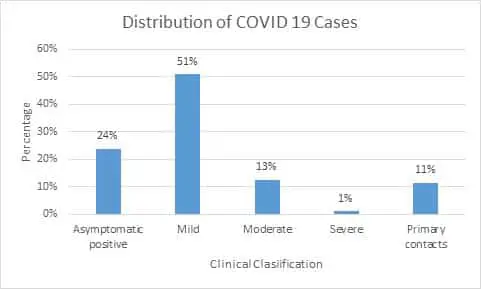

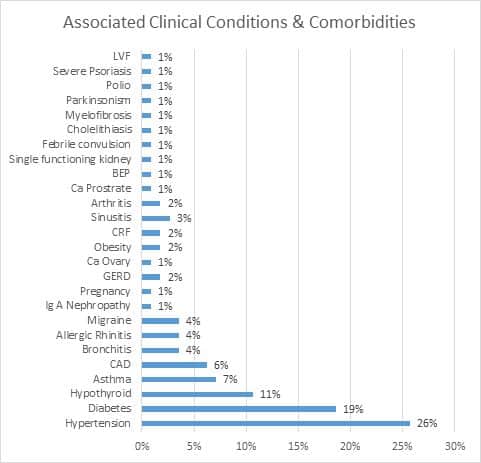
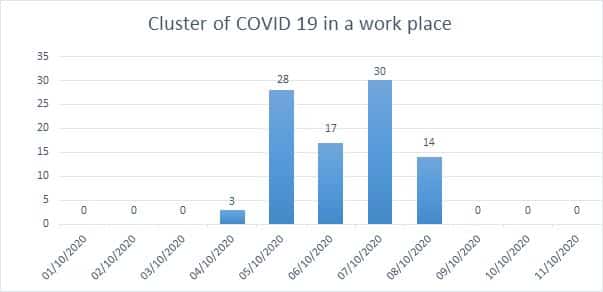
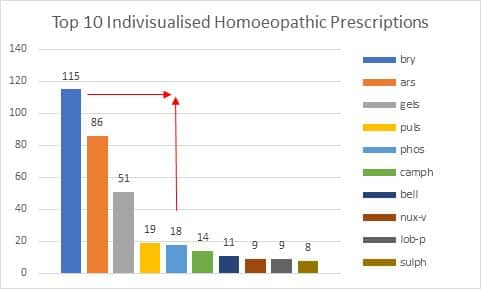
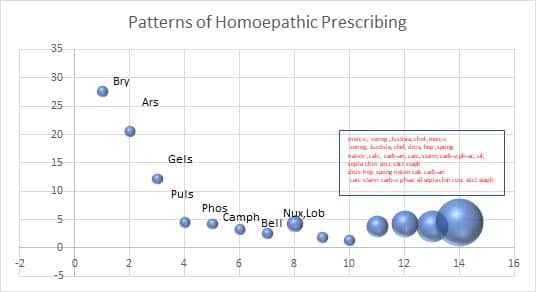

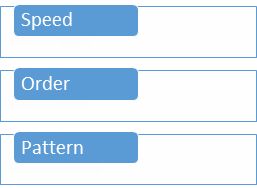
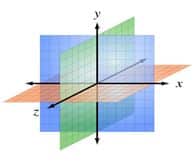
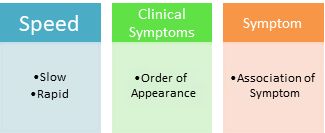

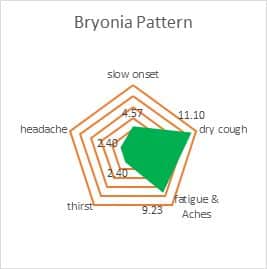
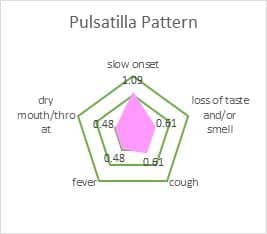
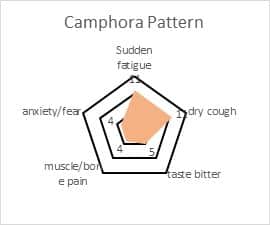
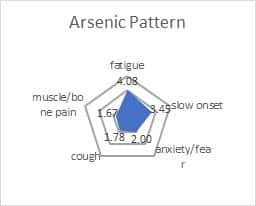
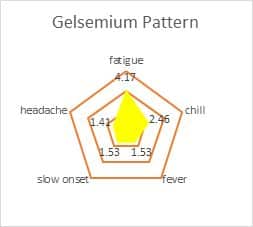
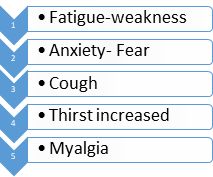

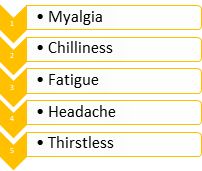

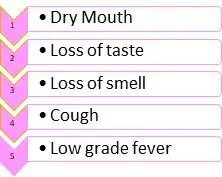
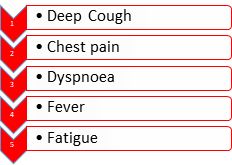
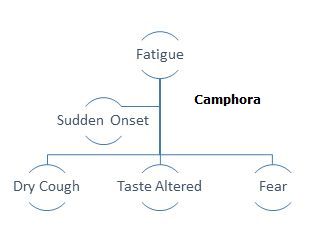

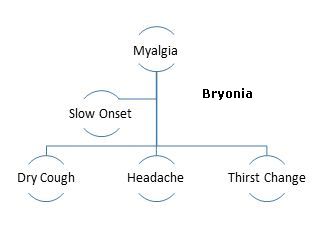
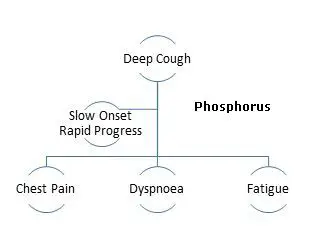
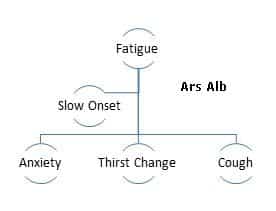

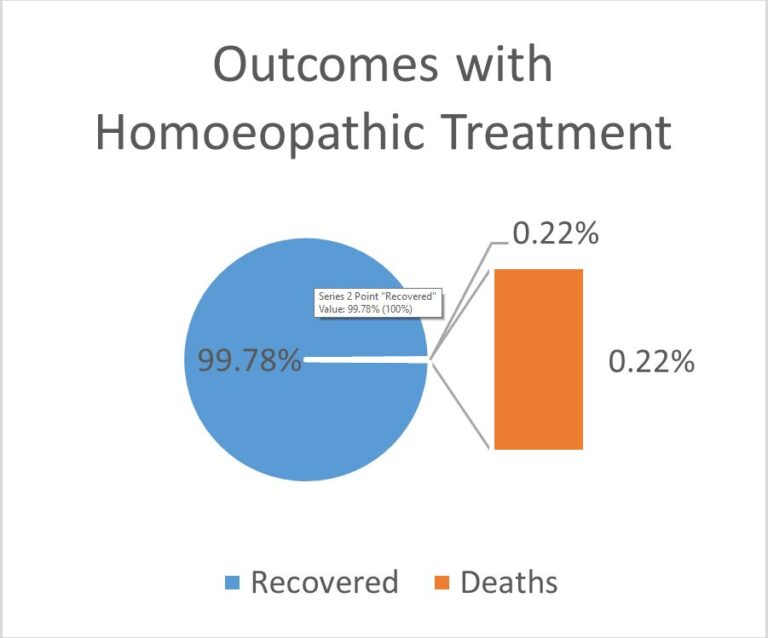
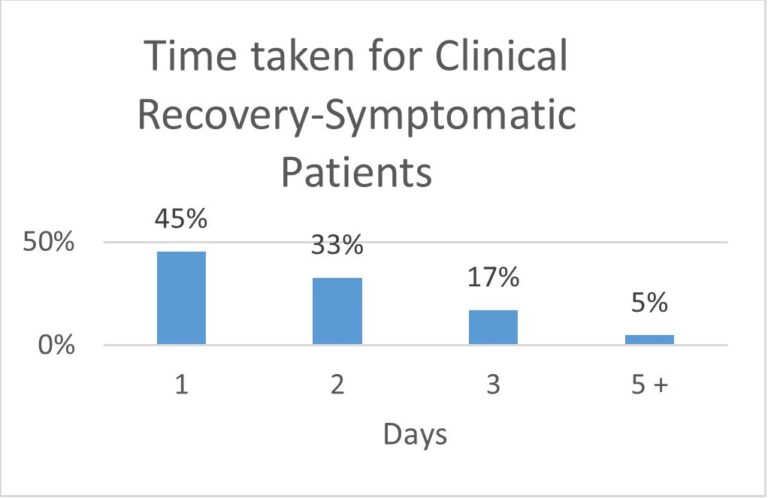
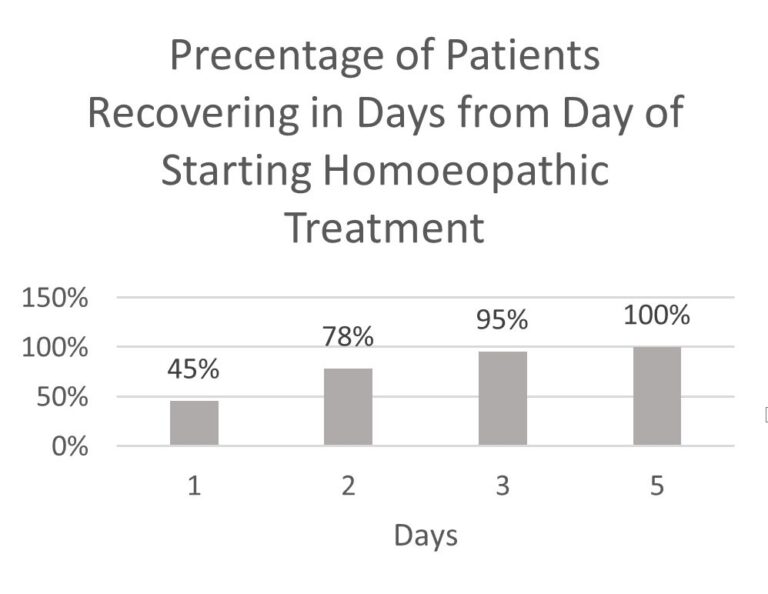
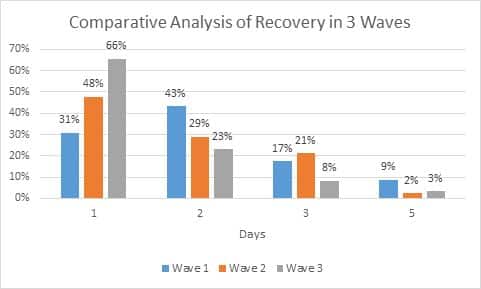
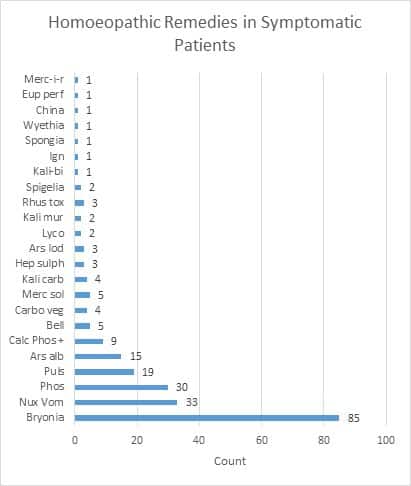
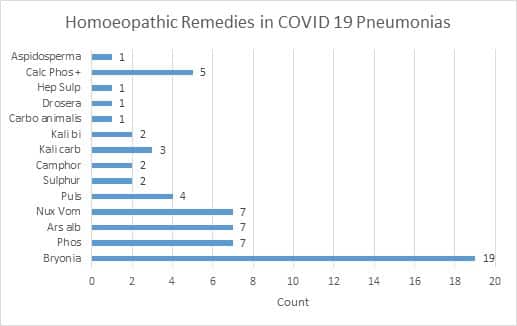
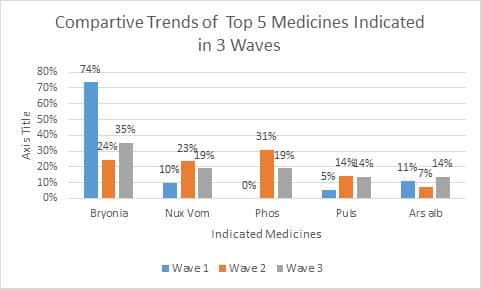
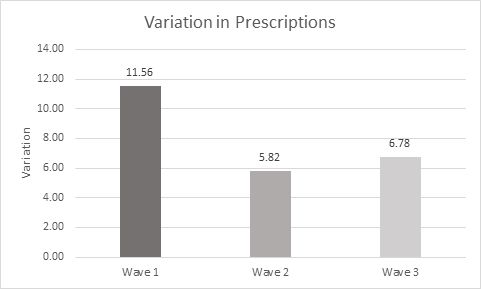
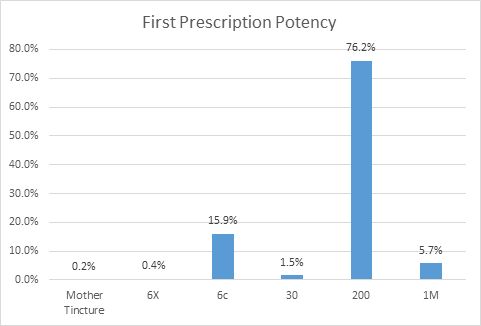
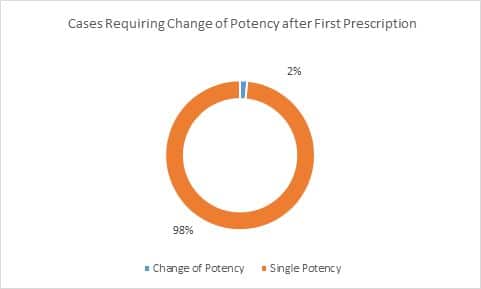
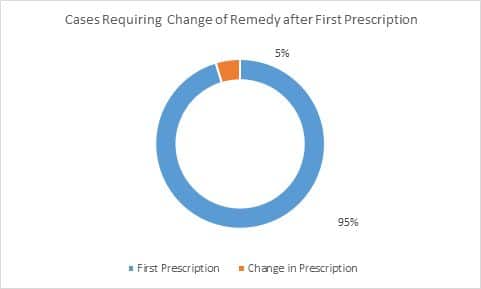


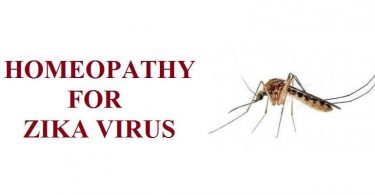

Dr. Dilip Dixit from Mumbai created a formulation of (Calc Phos 6X+China Ars 6c+Zinc Met 6c) which was prescribed only to small portion of healthy primary contacts of Covid 19 patients
May I know the basis,why and how the above mentioned formula was arrived.
Talking about patterns.. Since there is huge rise in heart failures post covid – Heart & circulation; infectious diseases, after: ADON(only remedy to be found in all major repertories) should be interesting. Large doses of Adonis are known to cause paralysis of heart and blood vessels, if one views covid hypoxia as a sluggish blood vessel issue (resulting in poor circulation of oxygen) I wonder if Adonis could have helped .. looking at Ranunculaceae family at large and how certain African countries were spared, I wonder if usage of Ranunculus multifidus (herbal remedy used against malaria in Africa) helped with covid immunity
Drs. Pawaskar and Krishnan,
You have demonstrated that this streamlined approach to case-taking is eminently practical in treating epidemic situations. It doesn’t sacrifice any accuracy and delivers excellent results. Now one needs to familiarize more practitioners with this.
Martin Earl